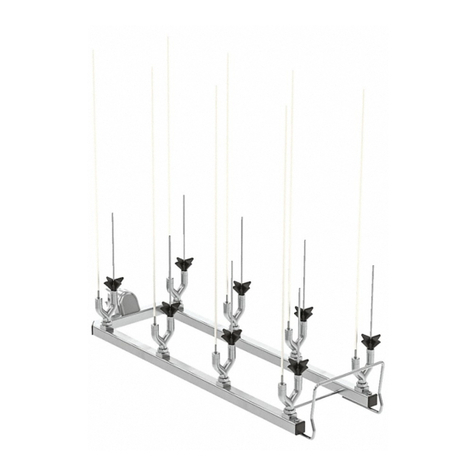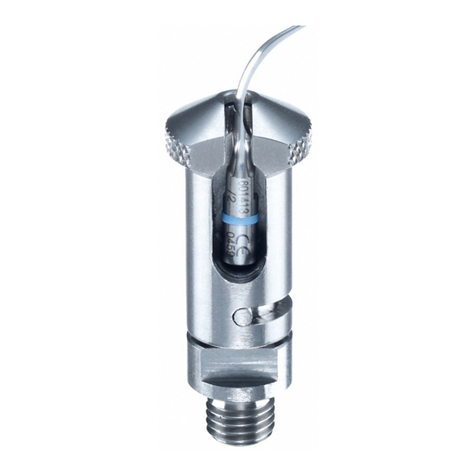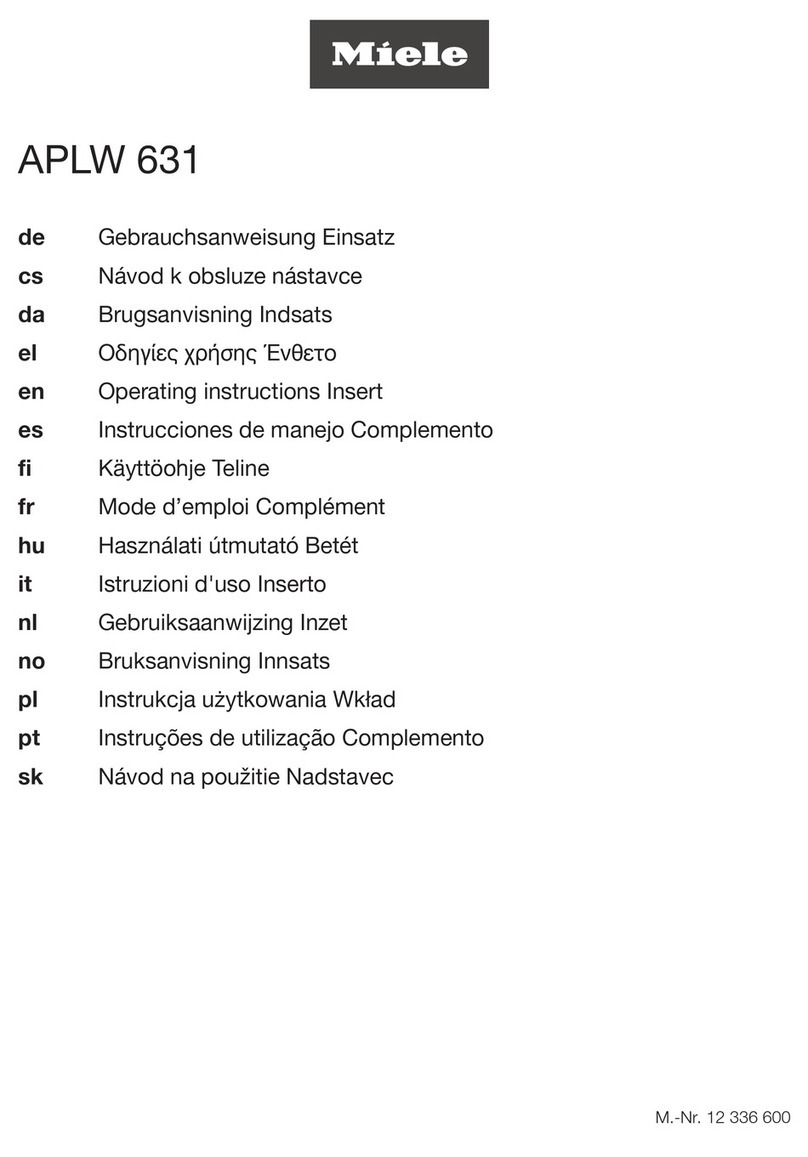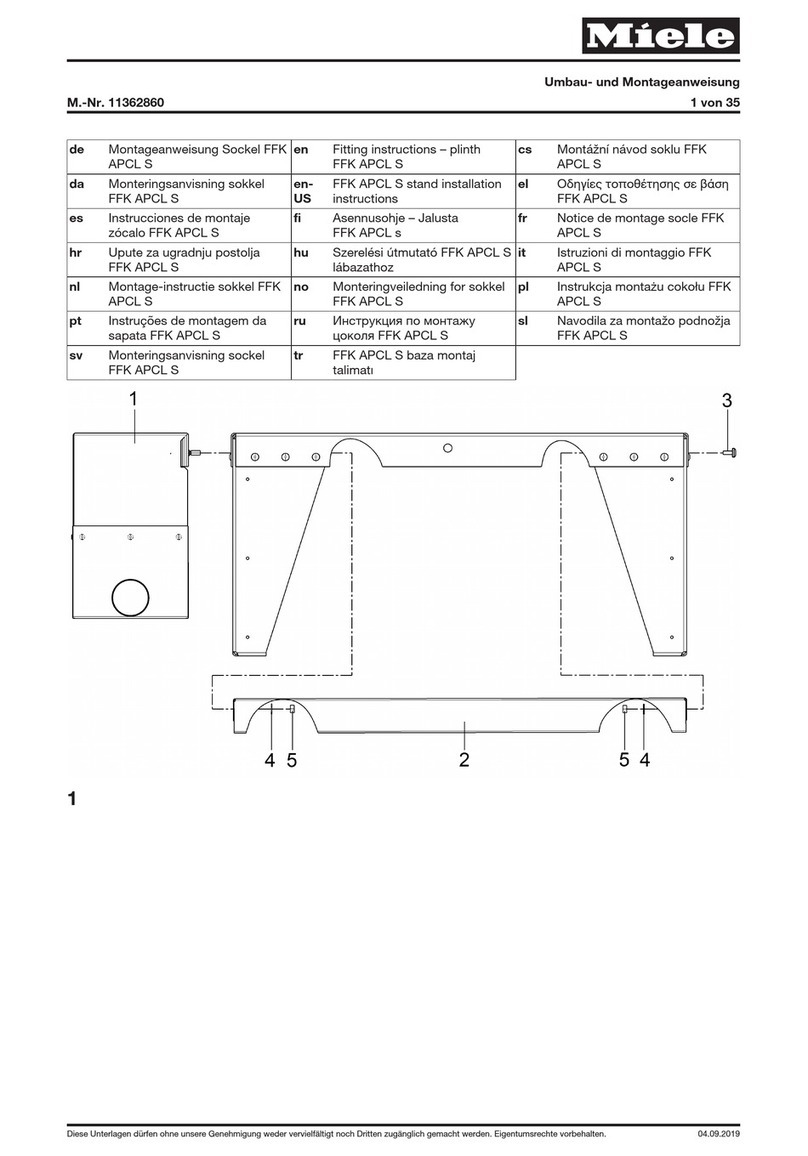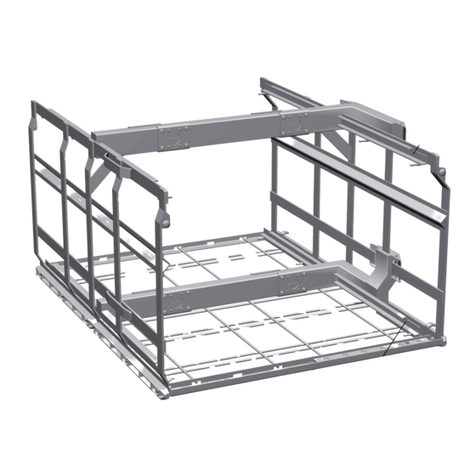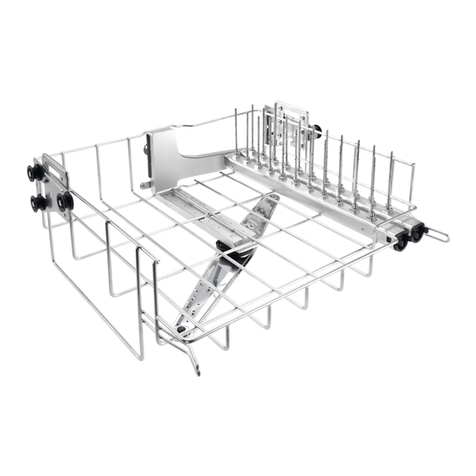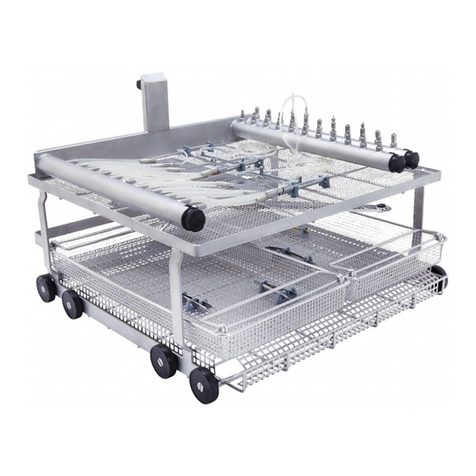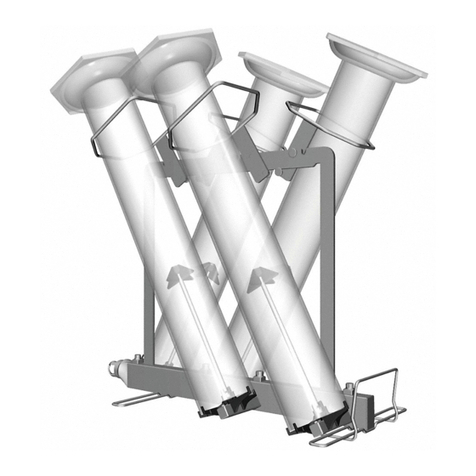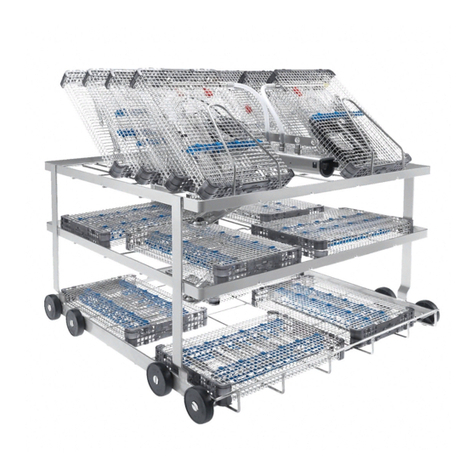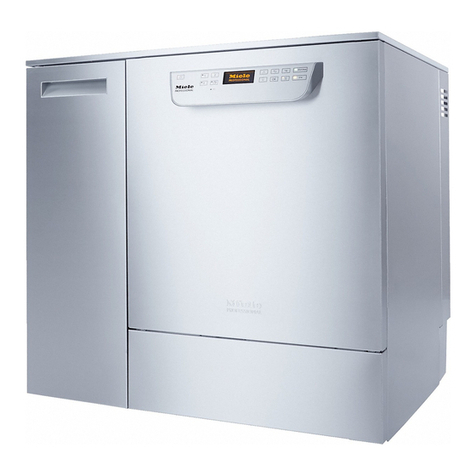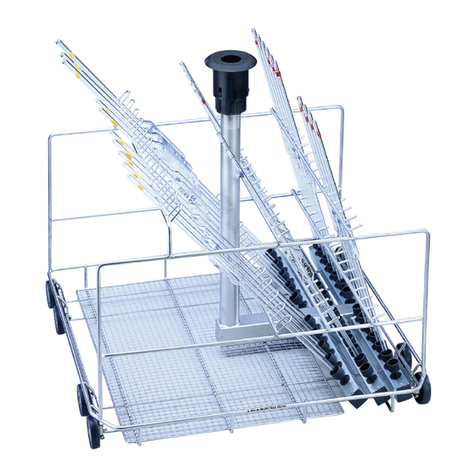Miele PG 8593 User manual

Operating instructions
Laboratory Glassware Washer
PG 8593
To avoid the risk of accidents or damage
to the appliance, it is essential to read
these instructions before it is installed
and used for the first time.
en - CA
M.-Nr. 10 284 370

2

Contents
3
Notes about these instructions..........................................................................................7
Intended use ........................................................................................................................8
Spray pressure and spray arm monitoring ............................................................................ 9
User profiles ........................................................................................................................ 10
Guide to the machine........................................................................................................11
Overview.............................................................................................................................. 11
Control panel....................................................................................................................... 12
LEDs in the buttons............................................................................................................. 13
Warning and Safety Instructions......................................................................................14
Symbols on the machine..................................................................................................... 19
Operation............................................................................................................................20
Display illustrations.............................................................................................................. 20
Switching on........................................................................................................................ 21
Switching off........................................................................................................................ 21
Automatic switch-off (Auto-Off function)............................................................................. 21
User interface in the display................................................................................................ 22
Menu operation ................................................................................................................... 22
Settings in the menu ........................................................................................................... 23
Symbols in the display ........................................................................................................ 24
Commissioning..................................................................................................................25
Installation and connection ................................................................................................. 25
Procedure ............................................................................................................................ 25
Opening and closing the door..........................................................................................29
Electronic door locking........................................................................................................ 29
Opening the door ................................................................................................................ 29
Closing the door.................................................................................................................. 29
Opening the door using the emergency release ................................................................ 30
Water softener ...................................................................................................................31
Water hardness ................................................................................................................... 31
Setting the water hardness level ......................................................................................... 32
Filling the salt reservoir........................................................................................................ 34
Add salt reminder ................................................................................................................ 36
Application technology .....................................................................................................37
Wash carts, baskets, modules and inserts ......................................................................... 37
Upper basket height adjustment......................................................................................... 38
Loading the machine........................................................................................................... 40
Chemical processes and technology ..............................................................................44
Adding and dispensing process chemicals ....................................................................48
Using process chemicals .................................................................................................... 48
Dispensing systems ............................................................................................................ 48
Labelling of the suction lances....................................................................................... 48
DOS modules ...................................................................................................................... 49
Connecting DOS modules.............................................................................................. 49
Dispensing liquids .......................................................................................................... 49

Contents
4
Neutralizing agent................................................................................................................ 50
Refilling neutralizing agent ............................................................................................. 50
Refill indicator................................................................................................................. 51
Dispensing neutralizing agent ........................................................................................ 51
Detergent............................................................................................................................. 52
Refilling liquid cleaning detergent .................................................................................. 52
Refill indicator................................................................................................................. 53
Dispensing liquid cleaning detergent ............................................................................. 53
Operation............................................................................................................................54
Selecting a program ............................................................................................................ 54
Starting a program .............................................................................................................. 54
Starting a program using delay start .............................................................................. 54
Drying ............................................................................................................................. 56
Program sequence indicator ............................................................................................... 58
End of program.................................................................................................................... 58
Cancelling a program .......................................................................................................... 59
Program cancelled due to a fault ................................................................................... 59
Cancelling a program manually ...................................................................................... 59
Settings ...........................................................................................................................60
Delay start ........................................................................................................................... 61
Drying .................................................................................................................................. 62
DOS venting ........................................................................................................................ 63
Filter change........................................................................................................................ 64
Language ......................................................................................................................... 64
Date ..................................................................................................................................... 65
Time of day.......................................................................................................................... 67
Volume................................................................................................................................. 70
Additional settings ............................................................................................................71
PIN code.............................................................................................................................. 73
Entering the PIN code .................................................................................................... 73
Log book ............................................................................................................................. 76
Report.................................................................................................................................. 77
Temperature unit.................................................................................................................. 77
Program settings ................................................................................................................. 77
Air cooling ........................................................................................................................... 78
Program release .................................................................................................................. 79
Moving a program: allocating program selection buttons................................................... 80
Dispensing systems ............................................................................................................ 81
DOS venting ................................................................................................................... 82
Test program ....................................................................................................................... 85
Interface .............................................................................................................................. 85
Water hardness ................................................................................................................... 88
Display: Temperature........................................................................................................... 88
Display: brightness and contrast......................................................................................... 89
Switch off after (Auto-Off function)...................................................................................... 90
Factory default..................................................................................................................... 91
Software version.................................................................................................................. 91
Program settings ...............................................................................................................92
Adjusting program settings ................................................................................................. 92

Contents
5
Program structure................................................................................................................ 92
Program header.............................................................................................................. 92
Program blocks .............................................................................................................. 93
Opening the menu............................................................................................................... 94
Resetting a program............................................................................................................ 95
Altering a program .............................................................................................................. 96
Allocating wash blocks................................................................................................... 97
Spray arm monitoring..................................................................................................... 98
Measuring conductivity (optional feature) .................................................................... 100
Changing water quantity .............................................................................................. 104
Increasing drainage time .............................................................................................. 105
Setting the concentration level..................................................................................... 106
Set wash block temperature ........................................................................................ 107
Drying unit .................................................................................................................... 109
Process documentation..................................................................................................114
Retrospective output of cycle reports............................................................................... 117
External software.......................................................................................................... 117
Report printer ............................................................................................................... 117
Maintenance ....................................................................................................................118
Service............................................................................................................................... 118
Routine checks.................................................................................................................. 119
Cleaning the filters in the wash cabinet ............................................................................ 119
Cleaning the spray arms.................................................................................................... 121
Cleaning the machine ....................................................................................................... 123
Cleaning the control panel ........................................................................................... 123
Cleaning the door and the door seal............................................................................ 123
Cleaning the wash cabinet ........................................................................................... 123
Cleaning the front......................................................................................................... 123
Preventing re-soiling..................................................................................................... 123
Checking wash carts, baskets, modules and inserts........................................................ 124
Performance check ........................................................................................................... 125
Changing the HEPA filter................................................................................................... 128
Problem solving guide ....................................................................................................130
Technical faults and messages ......................................................................................... 130
Dispensing / Dispensing systems ..................................................................................... 131
.......................................................................................................................................... 132
Insufficient salt / Water softener........................................................................................ 133
Cancel with fault code....................................................................................................... 134
Process-related faults and messages ............................................................................... 136
Door................................................................................................................................... 137
Unsatisfactory cleaning and corrosion.............................................................................. 138
Spray arm monitoring / conductivity / wash pressure....................................................... 140
Water inlet and drainage ................................................................................................... 142
Noises................................................................................................................................ 143
Printer / Serial interface..................................................................................................... 144
Maintenance ....................................................................................................................145
Cleaning the drain pump and non-return valve................................................................. 145
Clean the water intake filters ............................................................................................. 146

Contents
6
After sales service...........................................................................................................147
Contacting Miele Service .................................................................................................. 147
Software version................................................................................................................ 148
Installation........................................................................................................................149
Installation and levelling .................................................................................................... 149
Building under a continuous worktop ............................................................................... 150
Removing the lid........................................................................................................... 150
Electromagnetic compatibility........................................................................................... 152
Electrical connection ......................................................................................................153
Equipotential bonding connection .................................................................................... 153
Water connection ............................................................................................................154
Connecting the water supply ............................................................................................ 154
Non-pressurized (gravity feed) DI water connection 1.3 - 8.7psi (8.5 - 60kPa).......... 156
Connecting the water drain ............................................................................................... 157
Program guide .................................................................................................................158
Free memory ..................................................................................................................... 158
Free memory ..................................................................................................................... 160
Universal............................................................................................................................ 162
Standard............................................................................................................................ 164
Intensive ............................................................................................................................ 166
Inorganic............................................................................................................................ 168
Organic.............................................................................................................................. 170
Injector Plus....................................................................................................................... 172
Pipettes ............................................................................................................................. 174
Plastics .............................................................................................................................. 176
Short.................................................................................................................................. 178
Oil program........................................................................................................................ 180
Special 93°C-10' ............................................................................................................... 182
Demineralized rinse ........................................................................................................... 184
Rinse.................................................................................................................................. 184
Drain .................................................................................................................................. 184
Technical data..................................................................................................................185
Caring for the environment ............................................................................................186
Disposal of the packing material ...................................................................................... 186
Disposing of your old appliance........................................................................................ 186

Notes about these instructions
7
Warnings
Information which is important for safety is highlighted in a thick
framed box with a warning symbol. This alerts you to the potential
danger of injury to people or damage to property.
Read these warning notes carefully and observe the procedural
instructions and codes of practice they describe.
Notes
Notes contain information that is particularly important to follow.
They are highlighted in a thick framed box.
Additional information and comments
Additional information and comments are contained in a box with a
simple frame.
Operating steps
Operating steps are indicated by a black square bullet point.
Example:
Select an option using the arrow buttons and save your choice with
OK.
Display
Information given via the display are shown in display messages
using the same font as used in the display.
Example:
Menu Settings .

Intended use
8
This Miele laboratory glassware washer can be used to reprocess
laboratory glassware and laboratory utensils with water based media.
The process includes cleaning, rinsing and where required
disinfection and drying. Due to the wide variety of laboratory
glassware and laboratory utensils on the market, it may be necessary
in some cases to establish whether it is suitable for reprocessing in a
laboratory glassware washer. This will depend on its use and the type
of soiling present as well as disinfection parameters. Please also
observe information provided by the manufacturer of the laboratory
glassware and laboratory utensils.
Laboratory glassware and laboratory utensils suitable for
reprocessing are for example:
– Vessels such as test tubes, beakers, flasks, cylinders, etc.
– Measuring vessels such as measuring cylinders, pipettes,
volumetric flasks, etc.
– Dishes such as petri dishes, watch glasses, etc.
– Plates such as slides, sequencing plates, etc.
– Small items such as lids, spatulas, magnetic stirring rods, stoppers,
etc.
– Other items such as funnels, pipe/hose pieces, etc.
Examples of application areas:
– Laboratories in schools, colleges and universities,
– Research, quality assurance, development, technology and
production.
– Different areas of inorganic, organic, analytical and physical
chemistry,
– Biology, microbiology and biotechnology,
– Hospital laboratories.
Laboratory glassware and laboratory utensils for reprocessing are
referred to as the wash load if they are not more closely defined.
Processing conditions must be suitable for the wash load and for the
type of soiling. Process chemicals must be suitable for the type of
soiling and for methods of analysis being used.
The use of a suitable carrier (wash carts, baskets, modules, inserts,
etc.) is important to ensure the adequate cleaning of the load.
Examples are given in the section "Areas of application".
This machine is programmed to carry out the final rinse with mains
water or with processed water of a quality to suit the application (e.g.
purified water, fully demineralized water or demineralized water).
It is particularly important to ensure the appropriate water quality for
the rinse and final rinse of items for analytical purposes.

Intended use
9
The machine can be qualified for process validation.
Spray pressure and spray arm monitoring
The machine has a sensor for monitoring spray pressure in order, for
example, to detect pressure fluctuations due to misloading or foam in
the water circulation system. Spray pressure monitoring is set at the
factory to be active in the "Cleaning" and "Final rinse" wash blocks.
The spray pressure monitoring result is documented together with an
optional process documentation.
Spray arm speed can also be monitored, e.g. for prompt detection of
blockages due to misloading or foam in the water circulation system.
Spray arm speed monitoring can be activated or deactivated via the
programmable settings.
Miele Service can make further settings for spray pressure and spray
arm monitoring.

Intended use
10
User profiles
Daily operators Daily operators must be instructed in operating and loading the
machine and trained regularly to guarantee safe daily use. They
require knowledge of machine reprocessing of laboratory glassware
and laboratory utensils.
Tasks for daily routine operation are located in the Settings menu.
This menu is freely accessible to all users.
Administration More advanced tasks, e.g. interrupting or cancelling a program,
require more detailed knowledge about the machine reprocessing of
laboratory glassware and laboratory utensils.
Alterations or adaptations of the machine, e.g. accessories used or
on-site conditions require additional specific knowledge of the
machine.
Validation processes assume specialised knowledge of the machine
reprocessing of laboratory glassware and utensils, of the processes
involved and of applicable standards and legislation.
Administrative processes and settings are allocated to the Additional
settings menu. This is protected from unauthorized access by a PIN
code.

Guide to the machine
11
Overview
aComfort door locking mechanism
bModule slot for a communication module
(Back, top right)
cTest point for performance checks
(Top, front right; only visible with lid
removed)
dUpper machine spray arm
eRails for baskets and wash carts
fLower machine spray arm
gData plate
hReservoir for reactivation salt
iFilter combination
jToe kick panel with service flap
kOn the back:
– Second data plate
– Electrical and plumbing connections
– Suction lance(s) for external supply
containers
– Connections for external dispensing
modules (optional DOS modules)
lConnection point for wash carts and
baskets

Guide to the machine
12
Control panel
aButton (On/Off)
For switching the machine on and off.
bButtons , and
Program selection buttons.
Can be configured.
cButton (program list)
For accessing the list of all programs.
dDisplay
User interface and program sequence display.
eArrow buttons and
For navigating within the user interface.
fButton (cancel)
For canceling a process in the user interface
(not for canceling programs)
gButton (settings)
For accessing the system settings menu.
hButton Start/Stop
For starting or canceling a program.
iButton (door release)
For opening the door before or after a program.
jButton (Drying)
For switching drying on and off.
kButton OK
For selecting or confirming entries in the user interface.
l PC / Optical interface
Used by Miele service technicians to run diagnostic checks and
can also be used to update programming data in the future.

Guide to the machine
13
LEDs in the buttons
The buttons on the control panel have LEDs (Light Emitting Diodes)
that indicate the status of the machine.
Keypad LED Status
Button ON The machine is switched on.
OFF The machine is switched off.
Program
selection
buttons
,
and
ON The respective program has been
selected. At the end of the program the
LED will remain lit until a different
program is selected.
OFF The program is not selected or the
program settings are being selected.
Button ON A program has been selected from the
program list. At the end of the program
the LED will remain lit until a different
program is selected.
OFF No program has been selected from the
list or the program settings are being
selected.
Button ON The additional "Drying" function has been
activated for the selected program (not
available for all programs; see "Program
chart").
OFF The additional "Drying" function has been
deactivated
Button
Start/Stop
ON A program is running.
FLASHES
GREEN
A program has been selected, but not yet
started.
FLASHES
RED
A fault has occurred (see "Problem
solving guide").
OFF A program has finished.
Button ON The door is closed (locked) and there is
no program running.
FLASHES A program has finished and the door is
closed (locked).
OFF A program is running or the door is open
(unlocked).

Warning and Safety Instructions
14
This machine complies with all statutory safety requirements.
Inappropriate use can, however, lead to personal injury and
material damage.
Read these instructions carefully before using it for the first time to
avoid the risk of accidents and damage to the machine.
Keep these instructions in a safe place and make sure they are
available at all times to any user of the machine.
Correct application
This machine is designed for use with the applications described in
these operating instructions only. Alterations or conversions to the
machine, or using it for purposes other than those for which it was
designed, are not permitted and could be dangerous.
This machine must only be used for cleaning laboratory glassware
and utensils if the manufacturer has stated that they are suitable for
machine reprocessing. Manufacturer's cleaning and maintenance
instructions must also be observed.
Miele cannot be held liable for damage caused by improper or
incorrect use or operation of the machine.
This machine is intended for indoor use in a stationary location
only.
Risk of injury
Please pay attention to the following notes to avoid injury!
This machine must be commissioned, serviced and repaired by a
Miele service technician only. To ensure compliance with Good
Laboratory Practice guidelines, a Miele service contract is
recommended. Unauthorized repairs can pose considerable risks to
the user.
Do not install the machine in an area where there is any risk of
explosion or of freezing conditions.
In order to reduce the risk of water damage, the area around the
machine should be limited to furniture and fittings that are designed
for use in commercial environments.
If the machine is built under, it must only be installed under a
continuous worktop run which is firmly secured to adjacent units to
improve stability.
The electrical safety of this machine can only be guaranteed when
it is correctly grounded. It is essential that this standard safety
requirement is met. If in any doubt, please have the electrical
installation tested by a qualified electrician. Miele cannot be held
liable for the consequences of an inadequate earthing system (e.g.
electric shock).

Warning and Safety Instructions
15
A damaged or leaking machine is dangerous and poses a safety
hazard. Immediately disconnect the machine at the power switch and
contact the Miele Service Department.
Personnel operating the machine should be trained on a regular
basis. Untrained personnel must not be allowed access to the
machine or its controls.
Only use process chemicals which have been approved by their
manufacturer for the application you are using. The manufacturer of
the process chemicals is responsible for any negative influences on
the material of the load is made from and for any damage they may
cause to the machine.
Always exercise caution when handling the process chemicals for
this machine. These products may contain irritant, corrosive or toxic
ingredients.
Always comply with safety requirements and the manufacturer's
safety instructions (see safety data sheets)!
Use protective eyewear and gloves!
The machine is designed to operate with water and the
recommended process chemicals only. Organic solvents or
flammable liquid agents must not be used in it!
This could cause an explosion, property damage due to the
destruction of rubber and plastic components, and the resulting
leakage of liquids.
The water in the cabinet must not be used as drinking water.
Do not lift the machine by protruding parts such as the control
panel or the opened service flap as these could be damaged or torn
off.
Do not sit or lean on the opened door. This could cause the
machine to tip or become damaged.
Be careful when sorting items with sharp, pointed ends. Position
them in the machine so that you will not hurt yourself or create a
danger for others.
Broken glass can result in serious injury when loading or
unloading. Broken glass items must not be processed in the machine.
When operating the machine, beware of the high temperatures
involved. If you bypass the electrical lock to open the door, there is a
danger of scalding and heat or chemical burns. If disinfectants have
been used, there is also the danger of inhaling toxic vapour.
Should personnel accidentally come into contact with toxic
vapours or processing chemicals, consult the manufacturer's safety
data sheets for emergency procedures.

Warning and Safety Instructions
16
Always allow wash carts, baskets, modules, inserts, and loads to
cool down before unloading. Any water remaining in concave items
could still be very hot. Empty them into the wash cabinet before
taking them out.
Never clean the machine or surrounding area with a water hose or
a pressure washer.
The machine must be disconnected from the mains electricity
supply before any maintenance or repair work is carried out.
Quality assurance
If it is necessary to interrupt a program in exceptional
circumstances, this may only be done by authorised personnel.
The standard of reprocessing must be routinely confirmed by the
user. The process should be validated on a regular basis, and
checked against documented control results.
For thermal disinfection, the appropriate temperatures and holding
times, as required by microbiological and public health standards and
guidelines, must be used to achieve the required degree of infection
control.
Make sure items being washed are suitable for machine
processing and are in good condition. Plastic items must be thermally
stable. Nickel plated items and anodised aluminum items can be
machine processed using special procedures only.
Items containing iron, and soiling containing residual rust must not be
placed in the cabinet.
Under certain circumstances process chemicals can cause
damage to the machine. Always follow the recommendations of the
process chemical manufacturers.
In case of damage or doubt about compatibility, please consult with
Miele.
Process chemicals containing chlorine can damage the elastomers
of the machine.
If the use of process chemicals containing chlorine is required, a
maximum temperature of 70°C in the program block "Main wash" is
recommended (see program overview).
In machines equipped with special oil-resistant elastomers (ex works)
for oil and grease applications process chemicals containing
chlorides may not be used!
Abrasive substances must not be placed in the machine as they
could cause damage to the mechanical components of the water
supply. Any residues of abrasive substances on items to be washed
must be removed without trace before reprocessing in the machine.

Warning and Safety Instructions
17
Pre-treating (e.g. with cleaning agents or disinfectants), some
types of soiling and the interaction of certain process chemicals can
cause foaming. Foam can have an adverse effect on the cleaning and
disinfection results obtained.
The process must be set so that no foam escapes the wash
compartment. Escaping foam jeopardizes the safe operation of the
machine.
The process must be checked regularly in order to detect any
foaming.
To prevent material damage to the machine and accessories used
from the effects of process chemicals, soiling and their interaction,
follow the notes in chapter "Chemical Processes and technology".
Even when a chemical additive (e.g. cleaning chemical) is
recommended on technical application grounds, the machine
manufacturer takes no responsibility for the effect of such chemicals
on the material of the items being cleaned.
Note that formulation changes, storage conditions, etc., that are not
disclosed by the chemical manufacturer may adversely affect the
cleaning results obtained.
When using process chemicals, always follow the instructions of
the chemical's manufacturer. The process chemicals must only be
used for the application it is designed for and in the situation
specified to avoid material damage and such dangers as a severe
chemical reaction (e.g. an explosive oxyhydrogen gas reaction).
Always follow the relevant manufacturer's instructions on storage
and disposal of process chemicals.
For critical applications, where very stringent reprocessing
requirements have to be met, it is strongly recommended that all
process-related factors (processing chemicals, water quality, etc.) are
discussed in advance with Miele.
For applications that demand especially stringent cleaning and
rinsing results, the operator must ensure that quality control occurs
on a regular basis to meet the standards involved.
Wash carts, baskets, modules and inserts should only be used for
the purpose for which they are designed for.
Hollow items must be thoroghly cleaned, internally and externally.
Secure small and light items with cover nets or place in a mesh
tray for small items, so that they do not block the spray arms.
Empty all containers and hollow utensils before loading them into
the machine.

Warning and Safety Instructions
18
The amount of residual solvents and acids on items going into the
cabinet should be minimal.
There should be no more than a trace of any solvents with a flash
point of below 21°C.
Chloride solutions, in particular hydrochloric acid, must not be
placed in the cabinet.
To avoid corrosive damage, make sure the stainless steel housing
does not come into contact with solutions or steam containing
hydrochloric acid.
After any plumbing work the water pipework to the machine will
need to be vented. If this is not done, components can be damaged.
The gaps between a built-in machine and adjacent cabinetry must
not be filled with silicone sealant as this could compromise the
ventilation of the circulation pump.
Follow the installation instructions in the operating instructions and
in the installation instructions.
Safety with children
Children must be supervised in the vicinity of the machine. Do not
allow children to play with the machine. Among other hazards, they
could get locked inside it.
Children must not use the machine.
Keep children away from process chemicals! These can cause
burning in the mouth, nose and throat if swallowed, or inhibit
breathing. Keep children away from the machine when the door is
open. There could still be residual process chemicals in the cabinet.
Observe the safety data sheets for the process chemicals and seek
medical advise immediately if a child has swallowed process
chemical or got it in the eyes.
Using accessories
Only Miele accessories should be connected to this machine for
the appropriate application. Consult Miele for details on the type of
equipment to use.
Only use Miele wash carts, baskets, modules and inserts with this
machine. Using wash carts, baskets and inserts made by other
manufacturers, or making modifications to Miele accessories can
cause unsatisfactory cleaning results, for which Miele cannot be held
liable. Any resultant damage would not be covered by the warranty.

Warning and Safety Instructions
19
Symbols on the machine
Warning:
Observe the operating instructions!
Warning:
Danger of electric shock!
Disposing of your old appliance
Please note that the machine may have contamination from blood,
bodily fluids, pathogenic germs, facultative pathogenic germs,
genetically modified material etc. in it and must be decontaminated
before disposal.
For environmental and safety reasons ensure the machine is
completely drained of any residual water, chemical residues and
cleaning chemicals. Observe safety regulations and wear protective
eyewear and gloves.
Remove or destroy the door latch to prevent children from locking
themselves in. Then make appropriate arrangements for its safe
disposal.
Miele will not be held liable for damage caused by failure to comply
with these Warning and Safety Instructions.

Operation
20
Control panel
The machine is operated exclusively by the buttons located on the
stainless steel surfaces either side of the display. The display is not a
touch screen.
A light touch on the relevant button is sufficient to operate the
functions. The buttons can also be pressed and held for approx. 20
seconds.
Display illustrations
All display illustrations shown in these operating instructions are
examples which can be different from the actual display screens
shown.
Universal
Temperature
Duration h1:30
75 °C
The control buttons are shown next to the display. The , and
Start/Stop buttons are not shown.
Other manuals for PG 8593
3
Table of contents
Other Miele Laboratory Equipment manuals
Popular Laboratory Equipment manuals by other brands

Belden
Belden HIRSCHMANN RPI-P1-4PoE installation manual

Koehler
Koehler K1223 Series Operation and instruction manual

Globe Scientific
Globe Scientific GCM-12 quick start guide

Getinge
Getinge 86 SERIES Technical manual

CORNING
CORNING Everon 6000 user manual

Biocomp
Biocomp GRADIENT MASTER 108 operating manual
